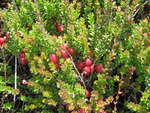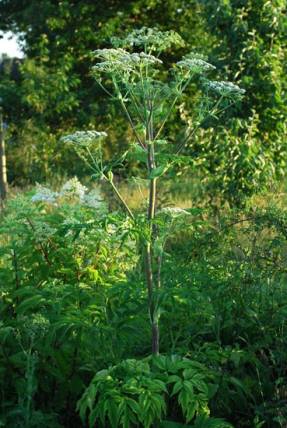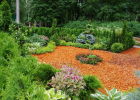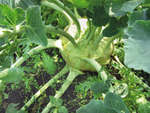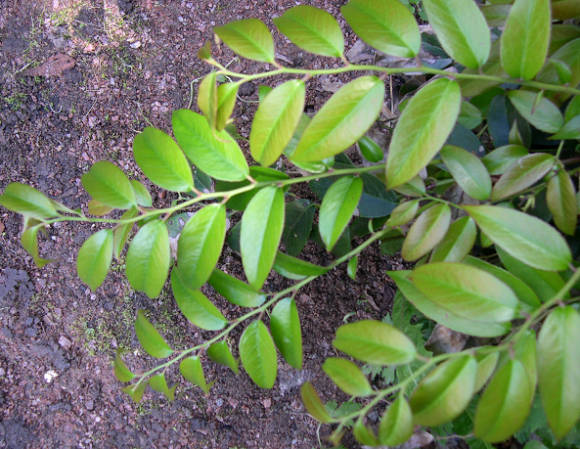The bright holiday of Christmas - in Russia it was always celebrated widely and cheerfully. Not the last place in the celebration of this great celebration was given to the festive feast. The Russian Christmas table was perhaps the richest of the year, because even according to pre-Christian beliefs, a plentiful table ensured good luck for the whole next year, and Christmas is preceded by a fast, albeit not the most strict one, after which everyone wanted to taste delicious and hearty dishes.
40 days before Christmas, the Christmas (or Filippov) fast begins. It is quite strict, and its end, when you cannot even eat fish, just coincides in time with the celebration of the New Year. By the way, an Orthodox person is not allowed to drink wine on the night of December 31 to January 1. And January 6th is not supposed to be and there is nothing but oozy. Most likely, the name of this dish gave the name to Christmas Eve - the last day before Christmas.
Sochivo ate on Christmas Eve evening, after the first star appeared in the sky. Sochivo is a dish made from grains, nuts and dried fruits, completely lean but nutritious, its purpose is to give strength to adults and children to withstand the long Christmas service. All the products from which the juicy was prepared were endowed with special symbolic meaning: grain is a symbol of resurrection to life, honey is a symbol of health and a prosperous life, poppy seeds are prosperity in the family. Wheat was not always the base of the syrup, but nuts, honey, and dried fruits remained a constant part of the recipe.

In Orthodox cuisine, there are a lot of recipes for sochiv; the only true, classic, perhaps, is impossible to name. When preparing soch, the choice of ingredients: cereals, cereals and additives to them - mostly depended on the area, wealth and personal preferences of the hostess. Even the name of this dish changed in different regions, somewhere on Christmas Eve they put coliva on the table, and somewhere - kutya, in fact, it is the same thing. It is important to remember that in Russian ritual cuisine, kutia can be both slow and lean, and it is the lean one that is served on Christmas Eve.
The second must-have dish of the Lenten Christmas table is uzvar (or broth) from dried fruits, but honey was added instead of sugar. The most popular in Russia was an apple broth with the addition of dry or soaked cranberries, lingonberries or raspberries. In the southern regions of the country, a smoked pear was necessarily added to this drink. Fragrant herbs were a popular addition to the broth: mint, oregano, lemon balm, currant leaf, thyme. Often they diluted the brew with soy to eat this dish in the form of a liquid sweet porridge.

In fact, uzvar in Russia is a traditional soft drink, nevertheless, it was customary to prepare it for church holidays. Uzvar differs from compote in that the uzvar is not boiled. Sometimes starch or grain sourdough (wheat or oat) was added to it, then the consistency of the uzvar resembled jelly. The finished uzvar is served only chilled.
The ingredients for making a Christmas ornament are now easily found in almost every home. The essential ingredients are dried apples, pears, black raisins and honey. If desired, you can add cinnamon, orange or lemon zest, or the juice of these citrus fruits to them. Dried fruits must be added to boiling water in a strictly defined order: first apples, five minutes later - pears, and then raisins and other ingredients. The drink is brought to a boil and only after cooling to 30-40 degrees honey is added to it.
The Lenten meal on the evening of Christmas Eve contained not only the obligatory dishes - soothing and boiled - but also other lean dishes: pancakes, vinaigrette, cabbage rolls, vegetable stews or cereals.
It was on Christmas Eve in Russia that they began to prepare for the main thing - the Christmas feast - according to the Orthodox tradition, twelve dishes were to be put on the table - according to the number of the holy apostles.It was not easy for everyone to maintain this tradition - for such a rich menu, it was necessary to have a stable income. In order to lure such wealth into the house, for Christmas in every Russian family whole herds of roes were baked - Christmas gingerbread in the form of animal figurines. Russians roe - both a delicacy and an important amulet for the home.

In the evening on Christmas Eve, each family in its entirety sat down in the upper room at a large table in order to stick as many gingerbreads as possible from yeast-free dough mixed with milk. The dough for them was prepared strongly in advance and kept in the cold - it was believed that this improves its quality. Simple ingredients - milk, wheat flour, salt - that's all. Then the goats were taken out into the yard in the frost for the whole night, and on Christmas morning they were baked in the oven. Ready-made roes were covered with white sugar or pink icing, which was made with cranberry or lingonberry juice. The most successful gingerbread cookies were carefully kept all year round - for good luck.
In the northern regions of Russia, the roe was either cut out of rolled dough with a special mold, or skillfully molded like a clay toy. The families took care of the molds for the goats like jewels and passed them on by inheritance. To steal such an object meant to incur eternal damnation on yourself and your descendants! Craftsmen specializing in the manufacture of such molds for carving Christmas gingerbread were highly respected and respected in Russia, such forms were often a real work of art and a sure "guarantor" of attracting wealth to the family. Kozuli were first baked from rye flour, later from wheat flour, then burnt sugar was added to it, and in the 18th century, with the spread and greater availability of various overseas spices, Russian roe deer became even tastier. The most famous in Russia were the Arkhangelsk goats.
Kozuli had ritual significance - they were baked only on Christmastide and Christmas. Each family had its own recipe for roe. It was believed that the roe deer in the house kept it from misfortune, and the more roe deer donated, the more prosperity both the giver and the recipient of such a ritual gift would have in the house. Therefore, roe deer on Christmastide and Christmas was traditionally presented to everyone to whom the soul lay. Later, this tradition was carried over to the New Year, and roes became traditional New Year's cookies.
Roe deer got their name not from the word "goat" or "roe deer", as it would seem from its sound, but from the old Pomor word meaning "curl", "snake", since earlier the goats were made from strips of dough woven into fancy figurines. Modern roes are shaped cut out cookies. But the ancient name has survived to this day. Roes are hard, crunchy gingerbread cookies, very similar to gingerbread cookies. Arkhangelsk roe deer are always dark gingerbread cookies mixed with burnt sugar, in contrast to gingerbread cookies, which are often mixed with honey or molasses and do not have such a pronounced dark brown color. The large number of spices included in the roesul recipe gives them a unique aroma. Every Arkhangelsk craftswoman kozul still has her own "secret" bouquet of spices.
With the onset of Christmas, juicy or kutya was again served on the table, but already slow. This version has already been cooked in milk and served with butter or cream on the festive table. A serving dish with such syrup was decorated with circles of boiled eggs.
But on the Russian Christmas table, the most important food is meat. Russia is the land of cold weather, and Christmas is the main winter holiday, therefore from time immemorial on our land for this holiday they cut all kinds of animals, salted hams, smoked ham, stuffed sausages, pork heads and stomachs. Caroling - walking on the pre-Christmas night through the streets and singing: "Give the gut and the leg through the window!"
For several centuries in Russia there was a custom to put hay on the table at Christmas - in memory of the manger in which the baby Jesus was born.Hay was placed either under the tablecloth on the festive table, or in the middle of the table. Pans and dishes with meat dishes were beautifully arranged around such a sheaf: the more, the better, in rich houses - as many as several rows. Among the meat treats on the table were pork, lamb, and various poultry - domestic and forest. The main course on the Christmas menu was usually a whole goose, fried and topped with soaked apples and sauerkraut. No less popular, especially among the Russian nobility, was also the baked piglet, as well as all kinds of variations of this dish. Here is how Ivan Shmelev wrote about it in his "Summer of the Lord": "Bad, bad, but two or three pork carcasses are necessary, and black piglets, to fry with porridge, about three dozen, and white ones, for aspic, moloshnichkov, two dozen, so that it was enough for conspiracies. " And here is a Christmas recipe taken from the popular book by Ekaterina Avdeeva "The Complete Cookbook of an Experienced Russian Housewife or a Guide to Reducing Household Costs", published in 1842: parts and pour with horseradish and sour cream, serve cold. "

Such winter abundance of meat, so characteristic at Christmas, of course, is primarily due to the fact that in the villages the last cattle were always slaughtered at this time. This method of management existed and still exists not only in our country, but also in many other countries of the world, this explains the fact that baked suckling pig or stuffed goose are the “international” favorites of the Christmas menu. But national differences still exist. They concern not only the rules of serving and serving dishes, but also the used seasonings and side dishes. On the Greek table, the piglet will be served with celery, on the German table - with stewed cabbage, and on our table - Russian - of course, with horseradish! In traditional Russian cuisine, it was horseradish that was a universal seasoning, served with almost all dishes: meat, fish, cold and hot. Its characteristic pungent taste (especially in the old days!) Was often softened with sour cream.
In Russia, they always knew how and loved to bake. It is impossible to imagine a Russian Christmas table without baking: cookies, pies and pies, pies and pies, and also - a must! - carols, special pastries, which were presented to carols. Carols - small rye dough cakes with different fillings. The carols got their name from the ancient Slavic deity Kolyada, in whose honor the holidays were held in January. In the northern regions of Russia, Christmas carols were called wickets, and in the western regions, sweet food.

Of particular note are the Christmas oatmeal, or oatmeal pancakes. Historians claim that this tradition of baking such pancakes at this time of year dates back to pre-Christian times. Even the time period from Christmas to Epiphany, Christmastide, in many localities was named after pancakes - Avsenki or Ovsenitsy. Such pancakes were baked in ghee and with various fillings, which were baked right in the dough. Today this dish is cooked in few places in Russia, but it is still popular in Polish and Belarusian cuisine.

They drank at the Christmas table in Russia in accordance with their own taste and budget: liqueurs and liqueurs, home wines, meads and other intoxicating drinks.

